In the floating world where all things change
Love never changes by promising never to change.
(Geisha song)
Courtesans, Prostitutes, & Geisha
During Edo-period Japan (1600-1867), the yujo were the highest class of all courtesans. These sex professionals were trained in the bedroom arts from the time they were young: blossoming into womanhood, mastering the erotic arts, flourishing as a prostitute of a high order. Prostitution during that era of Japan was legal, but carefully licensed. One such ‘red lantern district’ was Shimabara, the Pleasure Quarter of Kyoto. Another was Yoshiwara, the Pleasure District of Edo (Tokyo).
The yujo were not geisha. They were the royalty of prostitutes, the refined artisans of erotica and lovemaking. Seduction was their art form from the way they used their harigata (dildo) to how to pleasure a man (shakuhachi しゃくはち or fellatio). Yujo knew about aphrodisiacs and the exotic practice of kissing (seppun). The Yujo women were “love artists.”
This romantic era of Japan was called Ukiyo
(Japanese: 浮世 “Floating World”)
From the Wikipedia resource, this Renaissance period of art and pleasure described the Edo pleasure district as:
“Yoshiwara, the licensed red-light district of Edo (modern Tokyo), which was the site of many brothels, chashitsu tea houses, and kabuki theaters frequented by Japan’s growing middle class.
People involved in mizu shōbai (水商売) (“the water trade”) would include hōkan (comedians), kabuki (popular theatre of the time), dancers, dandies, rakes, tea-shop girls, Kanō (painters of the official school of painting), courtesans who resided in seirō (green houses) and geisha in their okiya houses.
The courtesans would consist of yujo (women of pleasure/prostitutes), kamuro (young female students), shinzō (senior female students), hashi-jōro (lower-ranking courtesans), kōshi-jōro (high-ranking courtesans just below tayū), tayū (high-ranking courtesans), oiran (“castle-topplers,” named that way for how quickly they could part a daimyō (lord) from his money), yarite (older chaperones for an oiran), and the yobidashi who replaced the tayū when they were priced out of the market.
In addition to courtesans, there were also geisha/geiko, maiko (apprentice geishas), otoko geisha (male geishas), danna (patrons of a geisha), and okasan (geisha teahouse managers). The lines between geisha and courtesans were sharply drawn, however – a geisha was never to be sexually involved with a customer, though there were exceptions.
The term “water trade” (mizu-shobai 水商売) is the “floating world” which is metaphor for floating, drinking, and impermanence. Sex was like water. Water was “yin” and feminine, and, conversely, a man’s sexual energy was “yang” energy. Sex during the Edo-period Ukiyo life was imbued with poetry, art, and dream-like desire. Longing and secrets, mystery and lust.
Waiting anxiously for you
Unable to sleep, but falling into a doze—
Are those words of love
Floating to my pillow,
Or is this too a dream…?
My eyes open and here is my tear-drenched sleeve.
Perhaps it was a sudden rain.
(Geisha song)
Geisha were not permitted to have sexual relations with the yujo’s customers. The term “Geisha” means “Artist” and the art of Geisha was entertainment— dance, shamisen playing, and flirtatious conversation. The yujo were the sexual artists, great lovers, and ladies of pleasure. They were elegant enchantresses of the pillow.
Within the shoji screened worlds of tea houses, brothels, and the theater, geisha and yujo were not the only women of pleasure. There were varying levels of class and status within their own floating worlds— the Shiro (white) Geisha that entertained and flirted, the Joro (whore) Geisha were the tawdry types, and the Machi (town) Geisha were former dancing girls (odoriko). Lower class prostitutes and amateur whores were illegally working the towns outside of pleasure districts.
Even further into darkness were the unmentioned girls and women that came into the world of prostitution without a choice. Girls sold into brothels, not the beautiful sort of life that the yujo and geisha led. The Yoshiwara district alone was home to about 1,750 women in the 18th century.
Geisha embody the extreme feminine allure in Japan, as opposed to the wife’s position in Japanese society. Geisha are witty and elicit fantasies; they intrigue and delight. The wife at home may appreciate the geisha’s art of entertaining her husband, relieving her of such matters. The wife ruled the domestic household and her husband’s finances, raised children, while the geisha entertained, flirted, and enchanted.
Artists of the Floating World: Erotic Paintings
Shunga-e paintings were the erotica of the Edo-period, and the artists that created shunga-e were sometimes the same as those who made the famous Ukiyo-e woodblock prints— famous artists of Edo were also the creators of erotic prints and pornographic fantasies.
Artists of the Erotic Shunga-e were also great artists in general. Such as Katsushika Hokusai, who created Thirty-six Views of Mount Fuji (富嶽三十六景 Fugaku Sanjūrokkei) and the famous image The Great Wave off Kanagawa (神奈川沖浪裏 Kanagawa Oki Nami Ura).
Hokusai’s erotic art was also made with great talent. Most notably, The Dream of the Fisherman’s Wife
(蛸と海女 Tako to ama, Octopus and shell diver).
Making love with you
Is like drinking sea water.
The more I drink
The thirstier I become,
Until nothing can slake my thirst
But to drink the entire sea.
(Marichiko)
Romantic & Erotic Love in Ancient Japan
Romance and courtship in Heian-period Japan, pre-Edo times set in ancient Kyoto (Heian-kyo), painted the landscape for lovers brushing their hearts out in calligraphy into fervent love letters. Poetry was the vehicle of erotic love, longing, passion and desire. Lovemaking etiquette was such that even the ladies of the court and their noblemen were hot for sex and romance, writing poems to pursue, to enchant, and to express their innermost secrets of their hearts.
An excerpt from Lesley Downer’s book, Women of the Pleasure Quarters: The Secret History of Geisha:
“But what made Heian period most extraordinary was the way in which art and the cult of beauty were bound up with love. For more than sexual desire or gut-wrenching passion, love was an art form, an opportunity to put brush to paper, to immortalize the moment in a small literary gem.
Having heard that a certain lady was very beautiful or, even more titillating, had beautiful handwriting, a nobleman would sit down to compose a waka, a thirty-one syllable poem, and brush it, in his finest calligraphy, on delicately hued scented paper. When she received it, the lady would assess the handwriting and color of the paper as well as the wit and appropriateness of the poem before brushing a reply. The nobleman would be waiting with bated breath to see whether her handwriting and poem lived up to expectations.
If the exchange of poems was satisfactory, he would eventually assay a visit. He would creep in at night and immediately, in the pitch darkness, remove his clothes, lift the silken counterpane, lie down on the hard straw mat next to the lady and without further ado consummate the relationship. Slipping away before dawn, he would then brush an eloquent morning-after poem, bewailing the rising of the sun or the crowing of the cock announcing the hour of farewell. The lady in her turn would brush a reply. Thus through poems they communicated their decision as to whether to continue the affair or not.”
Erecting like
The upwards curve of a
Threatening shakuhachi
The shakuhachi is a flute, and ‘shakuhachi curve’ suggests a strong penis. The phallic symbol of the instrument allowed Edo-minded lovers to playfully muse about fellatio. As provocative as blowing a flute was to the lustful minds of Ukiyo era, the flute was used in many woodblocks prints to suggest the oral pleasure. Other slang terms for sex and sexual innuendos were “jade gate” for a woman’s sex and “jade stalk” and “matsutake” (or mushroom) for a man’s penis, and “selling spring” was to suggest selling sex, as the season “Spring” was utilized in poems and the sex trade as a multi-purpose term for sex.
I hold your head tight
Between my thighs and press
Against your mouth and
Float away forever in
An orchid boat
On the River of Heaven.
(Marichiko)
Geisha & Prostitutes in Love
Geisha were not allowed by their very nature to fall in love. Neither were prostitutes. It was the danger of the heart that neither sort could manage. It would mean disaster for their very existence as temptresses. To pretend to love was one thing. To fall in love was another thing entirely. Flirtation and courting was full of sexual desire— the art of seduction was a play, an illusion. So then, what happens when the geisha or the prostitute falls in love?
Historically in such circumstances the geisha and prostitute were ruined, overcome by passion and desire, the longing too great for them to handle while luring and beguiling other men. Suddenly, the art of seduction she used for others is seemingly powerless, as her heart is unable to bear the games she once so artfully played, with her mind lost in reverie for her lover. She becomes overwhelmed by dreams of running away with her beloved. No longer can she play the seductress to the many men that pay her for her attentions. She is consumed by passion and caught in the great tidal pull of life’s mystery: Love.
Love me. At this moment we
Are the happiest
People in the world.
(Marichiko)
And her art and erotic craft is love. Like the saying “live by the sword, die by the sword,” the prostitute and geisha, artists of seduction and flirtation, are the femme fatales, the unattainable feminine, for which men would do anything for, and therefore the power they wield is turned upon them. Longing. Heartache. Waiting.
Night without end. Loneliness.
The wind has driven a maple leaf
Against the shoji. I wait, as in the
old days,
In our secret place, under the
full moon.
The last bell crickets sing.
I found your old love letters,
Full of poems you never published.
Did it matter?
They were only for me.
(Marichiko)
In this world
love has no color—
yet how deeply
my body
is stained by yours.
(Izumi Shikibu)
There are many stories about geisha and prostitutes falling in love with their customers that are married and cannot change their lives or young and impoverished men that cannot rescue them out of their bondage or position. In such cases, the solution was death. Like Romeo and Juliet, the lovers were doomed to tragedy. Kabuki plays such as Love Suicides at Sonezaki re-enacted the true story of a double suicide in 1703 by the great Japanese dramatist Chikamatsu Monzaemon (1653-1724) known as the “Shakespeare of Japan.” The story was about a beautiful courtesan Ohatsu that falls in love with handsome Tokubei, who is too poor to buy her out of her position as prostitute. He cannot follow through with his arranged marriage to another, due to his love for Ohatsu. His dowry already granted to him for his arranged marriage is then revoked by his uncle. The story continues and sorrow unfolds as the star-crossed lovers cannot be together.
Black hair
Tangled in a thousand strands
Tangled my hair and
Tangled my tangled memories
Of our long nights of lovemaking.
(Yosano Akiko)
But sometimes, when lovers meet, the erotic desire flames their very souls. Even as a customer pays for sex and affections, whether pretended or not, it enters a realm that is human. It can be a source of inspiration. The nature of sex is union, when two lovers are as one. Regardless of money and position, sex is the essence of life and the mystery of our being alive. If sex and flirtation and the realm of erotic are the prostitute’s trade, then the question is — what does the prostitute do when she herself falls in love? How can she continue being a lover to many men, when she only wants to belong to the one man she loves? Like any other, she feels it ravage her very soul— awakening her, making her feel alive, passionate, and creative. The heart has its own reasons and mysteries. But how can she give her body to other men for money (her livelihood) when her instinct is to be devoted to the one she loves?
Your tongue thrums and moves
Into me, and I become
Hollow and blaze with
Whirling light, like the inside
Of a vast expanding pearl.
(Marichiko)
”To fall in love is to play with fire,” Beautiful Eiko laughed. She had a tumbling mane of silky black hair, porcelain skin, and a mouth that tempted. She had many customers that adored her, dazzled her with gifts and exquisite kimonos. Then she met a man who had nothing but himself to give. He listened to her, understood her. For the first time in her life, she felt alive, inspired by love. But their love affair had to be secret. She was locked within the world of the prostitute’s life. This was unbearable for Eiko. When other men touched her, she felt only her lover’s hands. When other men embraced her, she longed for her lover only. When in the arms of her beloved, he became the only man in her world. She only wanted him, to belong to him, as her love was an all consuming passion, the very fire that awakened her soul and lit her aflame with desire.
No different, really—
a summer moth’s
visible burning
and this body,
transformed by love.
(Izumi Shikibu)
{References used for this article: Downer, Lesley, Women of the Pleasure Quarters: The Secret History of the Geisha, and Dalby, Liza, Geisha}



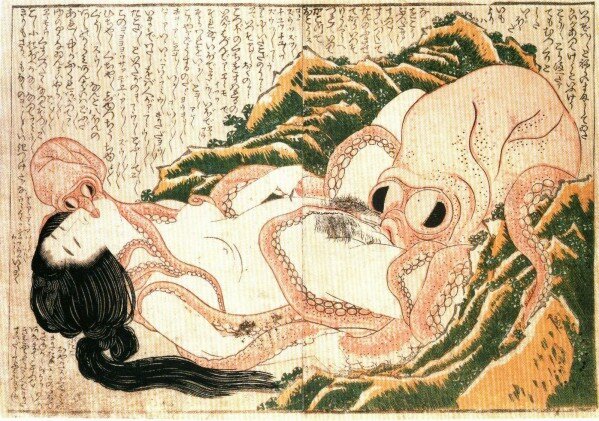
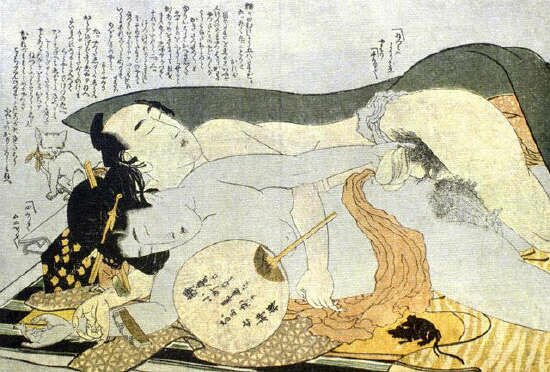
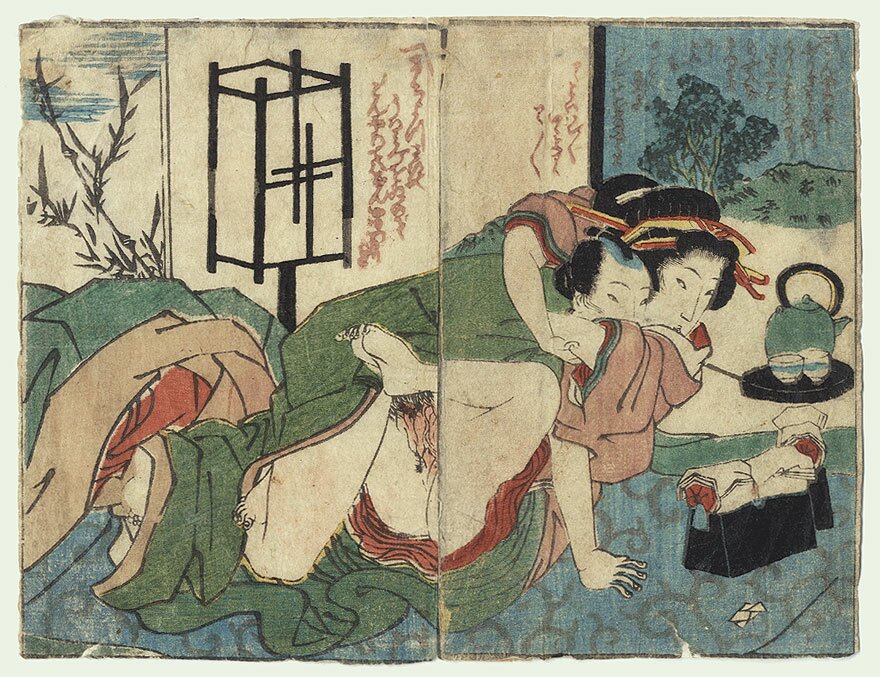
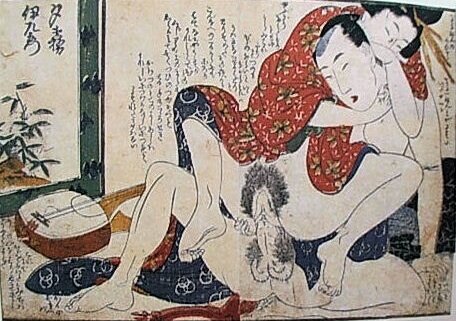
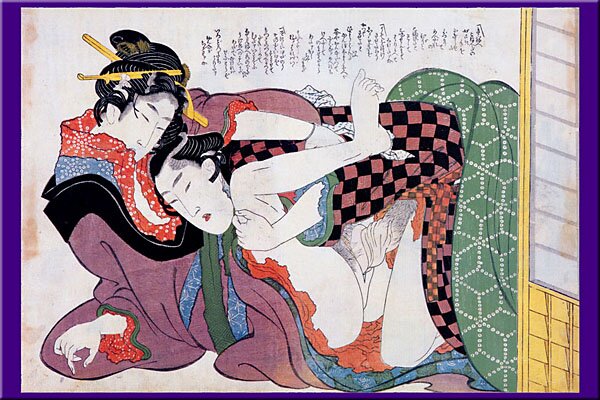
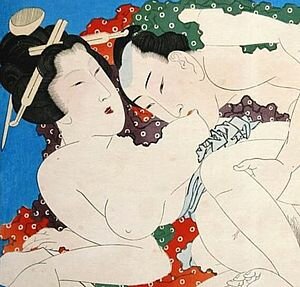

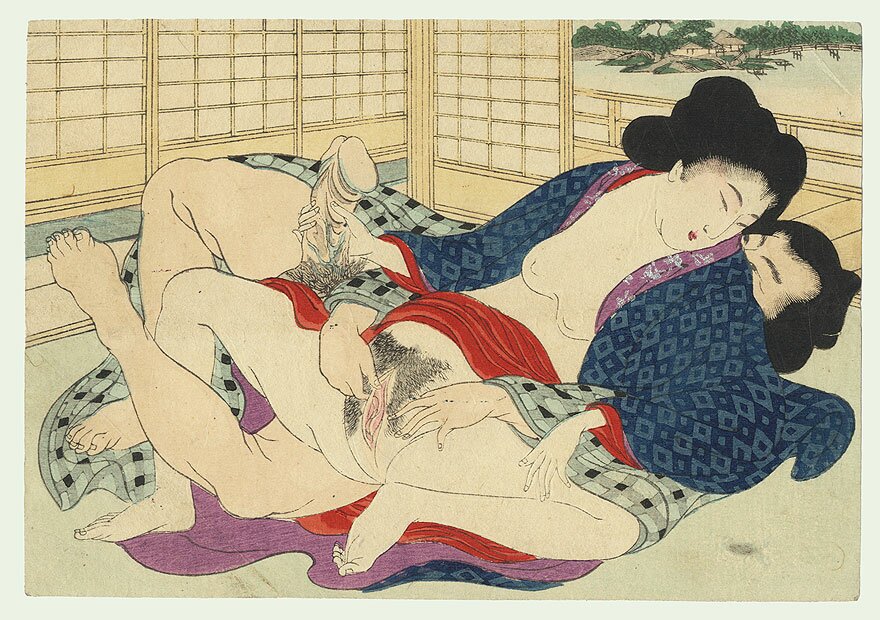









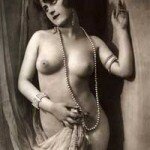









 Melt With You
Melt With You Women in Lust {Erotica Book Review}
Women in Lust {Erotica Book Review} Obsessed: Erotic Romance for Women
Obsessed: Erotic Romance for Women Dr. Estrogen (or) How I Learned to Stop Worrying and Love Menopause
Dr. Estrogen (or) How I Learned to Stop Worrying and Love Menopause Scent of a Lover
Scent of a Lover Goddess du Jour: Taryn Andreatta “La Amante”
Goddess du Jour: Taryn Andreatta “La Amante”






















